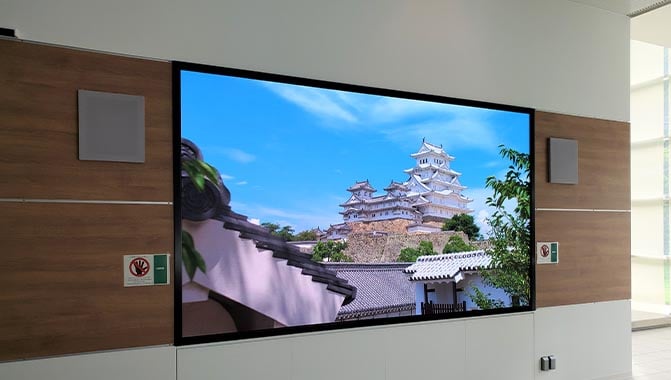Examining the Wide-ranging Connectivity Solutions Available for LED Display Panels
Examining the Wide-ranging Connectivity Solutions Available for LED Display Panels
Blog Article
Light Emitting Diode wall panels have secured traction for their capacity to deliver crisp visuals in multiple settings, from corporate environments to entertainment venues. One of the most significant aspects of these panels is their connectivity options, which allow users to connect them to multiple devices and systems. Comprehending the broad input options supported for Light Emitting Diode wall panels is essential for maximizing their use and effectiveness. This article explores these features, showcasing how they can adapt to various needs and preferences.
One frequent interface approach for Light Emitting Diode wall panels is High-Definition Multimedia Interface. High-Definition Multimedia Interface is widely recognized for delivering high-quality video and audio signals between devices. This interface type is particularly useful in business environments, such as conference rooms or classrooms, where visual content or video content are often displayed. By using HDMI cables, users can easily connect laptops, projectors, and streaming devices to Light Emitting Diode wall panels, guaranteeing a sharp and vibrant display of media.
Another commonly used connectivity option is DisplayPort, which is comparable to High-Definition Multimedia Interface but offers additional advantages. DisplayPort can support elevated refresh rates and display outputs, making it an excellent choice for gaming or graphic-intensive applications. For those using Light Emitting Diode wall panels in environments where performance is essential, such as competitive gaming venues or design studios, Display Port can provide the necessary visual quality. Moreover, many modern computers and graphics cards include Display Port connections, making it a convenient solution for tech-savvy users.
In addition to HDMI and Display Port, cordless transmission options are becoming increasingly common in Light Emitting Diode wall panel solutions. Wireless connections allow operators to transmit content without the need for physical cables, enabling a cleaner and more adaptable configuration. Platforms such as Wi-Fi and Bluetooth enable users to link smartphones, tablets, and laptops directly to Luminescent Diode wall panels without cumbersome wires. This versatility is especially beneficial in dynamic environments like trade shows or live functions, where rapid adjustments to displays are often required.
For extensive installations or more complex setups, LAN integration through wired networking is another reliable option. Wired links provide a stable and reliable way to connect multiple Light Emitting Diode wall panels within a network. This setup is ideal for digital signage use cases found in retail centers or transport hubs, where multiple panels may need to present coordinated content across a broad area. By using Ethernet cables and routing hardware, operators can ensure that all connected panels receive consistent data and information efficiently.
Lastly, it's important to consider the future of connectivity with technologies such as USB-C and Thunderbolt 3. These newer connection types offer increased data transfer speeds and flexibility by allowing one connector to handle both energy transfer and data transmission. As more systems incorporate these useful site standards, LED wall panels equipped with Type-C ports will likely become more common. This evolution in connectivity not only enhances the functionality of LED wall panels but also coincides with the emerging trend of minimalistic design in hardware arrangements by minimizing the number of cables required.
In summary, examining the broad interface methods accessible for LED wall panels reveals many possibilities for users across various industries. From conventional approaches like HDMI and DisplayPort to modern wireless solutions and network connections, each option serves unique purposes tailored to distinct needs. Furthermore, next-gen technologies like Universal Serial Bus-C offer further developments in how professionals interact with Luminescent Diode wall panels. By grasping these integration alternatives, end-users can make strategic selections check this link right here that enhance their overall experience with these versatile visual solutions.